
This site provides the complete text of Machiavelli's "History of Florence."
- Subject:
- Arts
- English Language Arts
- Material Type:
- Primary Source
- Provider:
- University of Pennsylvania
- Date Added:
- 08/07/2023

This site provides the complete text of Machiavelli's "History of Florence."
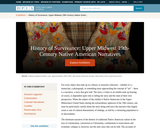
For every object that ends up in a library or museum collection åÐ whether itåÕs a manucript, a photograph, or something more approaching the concept of åÒartåÓ åÐ there is a narrative, a story that gets told. The story a visitor to an exhibit ends up hearing, of course, is dependent upon who is telling the story and the slant of their own perspective. When the subject of the exhibit is Native Americans in the Upper Midwestern United States during the extraordinary upheaval of the 19th century, one must be particularly careful about the story being told since the narrative that largely exists is one of cultural denouement, of endings, as told by a colonizing population to its descendants. The dominant narrative of the demise of traditional Native American culture in the face of colonization, conversion to Christianity, confinement to reservations and economic collapse is, however, not the only story that can be told. The accounts of the lives of Native Americans during the 19th century that are told by Native peoples themselves are strikingly different to those recounted in history books, movies, and all too frequently in museums. Rather than narratives solely recounting destruction and demise, Native stories about Native history tend to focus on what White Earth Ojibwe scholar Gerald Vizenor has called survivance åÐ a narrative incorporating themes of survival and resistance that insist on the inclusion of the Native presence. The following is an exhibit of resources that can be found within the Digital Public Library of America retold through the lens of Native American survivance in the Minnesota region. Within are a series of objects of both Native and non-Native origin that tell a story of extraordinary culture disruption, change and continuity during 19th c., and how that affects the Native population of Minnesota today. This exhibit was created by the Minnesota Digital Library.
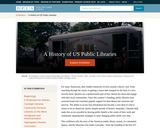
For many Americans, their fondest memories revolve around a library card. From searching through the stacks, to getting a return date stamped on the back of a new favorite book, libraries are a quintessential part of how Americans learn and engage with their local communities. Since this countryåÕs founding, public libraries have received broad and consistent popular support for their democratic missions and services. The ability to access free information has become a core ideal of what it means to be an American citizen, despite periods of historic inequality. Libraries help make this access possible by placing public benefit at the center of their work and continually adapting their strategies to meet changing public needs over time. This exhibition tells the story of the American public library system, its community impact, and the librarians who made it possibleåÑfrom the founding of the first US libraries through the first one hundred years of service. This exhibition was created as part of the DPLAåÕs Public Library Partnerships Project in collaboration with partners and participants from Digital Commonwealth, Digital Library of Georgia, Minnesota Digital Library, Montana Memory Project, and Mountain West Digital Library.

This site from the National Humanities Center provides an interesting look at the history of fire in America, how we use it to control natural resources and how it controls us.
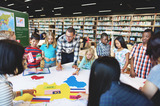
The focus on this package is a variety of resources to explore the concept of “history repeats itself”. For this content package, the resources focus on the Holocaust (WWII), Japanese Internments Camps, other Genocides, past & present, as well as human persecution in the 2000s to today. The content package includes lesson plans, professional resources, novels, and primary & secondary sources to prepare to teach and learn about the topic, “History Repeats Itself”. This package provides a variety of resources to support understanding of the human experiences of these events, as well as the lasting impact.

Original text (and transcription) of the 1862 Homestead Act, which granted land for a five-year residence for minimal fees. Accompanied by an overview of the act, including how it both helped and hindered farmers.
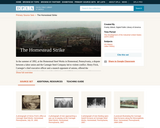
This collection uses primary sources to explore the Homestead Strike. Digital Public Library of America Primary Source Sets are designed to help students develop their critical thinking skills and draw diverse material from libraries, archives, and museums across the United States. Each set includes an overview, ten to fifteen primary sources, links to related resources, and a teaching guide. These sets were created and reviewed by the teachers on the DPLA's Education Advisory Committee.
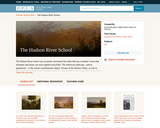
This collection uses primary sources to explore the Hudson River School. Digital Public Library of America Primary Source Sets are designed to help students develop their critical thinking skills and draw diverse material from libraries, archives, and museums across the United States. Each set includes an overview, ten to fifteen primary sources, links to related resources, and a teaching guide. These sets were created and reviewed by the teachers on the DPLA's Education Advisory Committee.

A United Nations document that discusses the human rights violations that took place during El Salvador's Civil War and its concerns about the situation two years after the peace accord was signed. (8 April 1994)

Web page with a large quantity of links to information on Hurricane Rita including maps, aerial images, satellite images, data, and much more.

The original text of British Prime Minister William Pitt's actual speech to Parliament describing his disapproval of the Stamp Act and why he felt it should be repealed.

Here one finds President Johnson's address to the nation in which he lays out his legislative priorities and his assessment of foreign affairs the early part of his administration.

The text of a 1649 colonial act concerning religion in Maryland. Describes punishment of any who reject Christian teaching.

This collection uses primary sources to explore Ida B. Wells and anti-lynching activism. Digital Public Library of America Primary Source Sets are designed to help students develop their critical thinking skills and draw diverse material from libraries, archives, and museums across the United States. Each set includes an overview, ten to fifteen primary sources, links to related resources, and a teaching guide. These sets were created and reviewed by the teachers on the DPLA's Education Advisory Committee.

This collection uses primary sources to explore immigration to the US and immigrant Americanization between 1880 and 1930. Digital Public Library of America Primary Source Sets are designed to help students develop their critical thinking skills and draw diverse material from libraries, archives, and museums across the United States. Each set includes an overview, ten to fifteen primary sources, links to related resources, and a teaching guide. These sets were created and reviewed by the teachers on the DPLA's Education Advisory Committee.
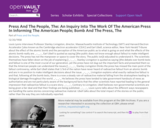
Earl Ubell is a pioneer among science and health writers in America. After a long, distinguished career at The New York Herald Tribune from 1943 to 1966, he went on to work at both CBS and NBC News. Prominent in the emerging scientific writing community in the 1950s and early 1960s, he was a recipient of the Lasker Medical Journalism Award 1957. Milton Stanley Livingston was a leading physicist in the field of magnetic resonance accelerators. Working first with professor Ernest O. Lawrence at the University of California, Livingston was instrumental in the development of the Berkeley cyclotron. Moving to Cornell in 1938, Livingston was part of the core group who established nuclear physics as a field of study. Choosing to stay with the Cornell cyclotron rather than follow colleagues onto the Manhattan Project, Livingston was involved in the production of radioisotopes for medical purposes. At the time of this interview, Livingston was director of the Cambridge Electron Accelerator, a joint project of Harvard University and MIT.In this program segment Louis Lyons quizzes Earl Ubell about the lack of public knowledge and the perception of the nuclear bomb, while pressing Professor Livingston to explain exactly what nuclear fallout is, and the danger it presents.
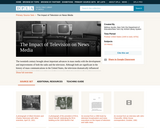
This collection uses primary sources to explore the impact of television on news media. Digital Public Library of America Primary Source Sets are designed to help students develop their critical thinking skills and draw diverse material from libraries, archives, and museums across the United States. Each set includes an overview, ten to fifteen primary sources, links to related resources, and a teaching guide. These sets were created and reviewed by the teachers on the DPLA's Education Advisory Committee.
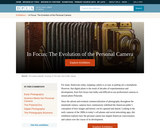
For many Americans today, snapping a photo is as easy as pulling out a smartphone. However, that digital photo is the result of decades of experimentation and development, from first forays into bulky and difficult-to-use professional cameras to instant-photo Polaroids. Since the advent and eventual commercialization of photography throughout the nineteenth century, cameras have continuously redefined the American publicåÕs conception of how images and history can be captured and shared. Looking to the early cameras of the 1800s to todayåÕs cell phones and social networking apps, this exhibition explores how the personal camera has shaped American consciousness and culture over the course of its development. This exhibition was created as part of the DPLAåÕs Digital Curation Program by the following students as part of Dr. Joan E. Beaudoin's course "Metadata in Theory and Practice" in the School of Library and Information Science at Wayne State University: Ellen Tisdale, Rachel Baron Singer, Amanda Seppala, Michell Geysbeek, and Jay Purrazzo.
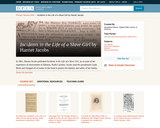
This collection uses primary sources to explore Incidents in the Life of a Slave Girl by Harriet Jacobs. Digital Public Library of America Primary Source Sets are designed to help students develop their critical thinking skills and draw diverse material from libraries, archives, and museums across the United States. Each set includes an overview, ten to fifteen primary sources, links to related resources, and a teaching guide. These sets were created and reviewed by the teachers on the DPLA's Education Advisory Committee.

This collection of maps of India from the Perry-Castaneda Collection offers political maps, historical maps, maps of individual territories, and cultural maps.